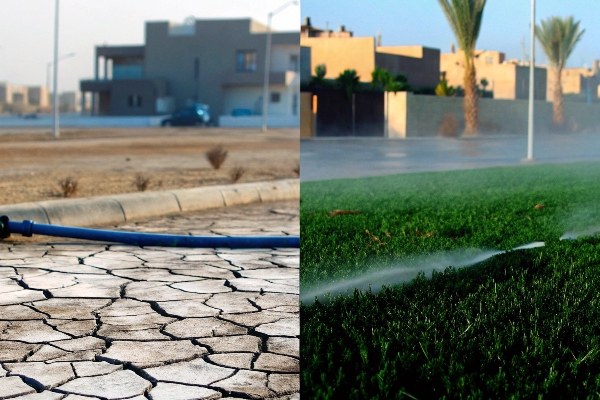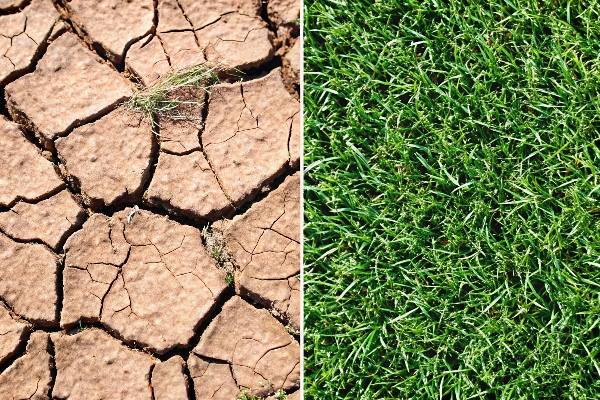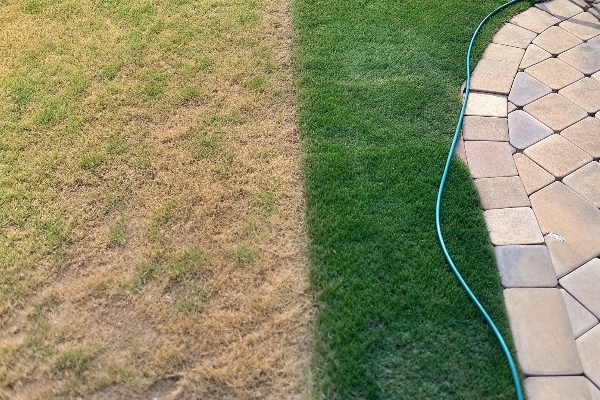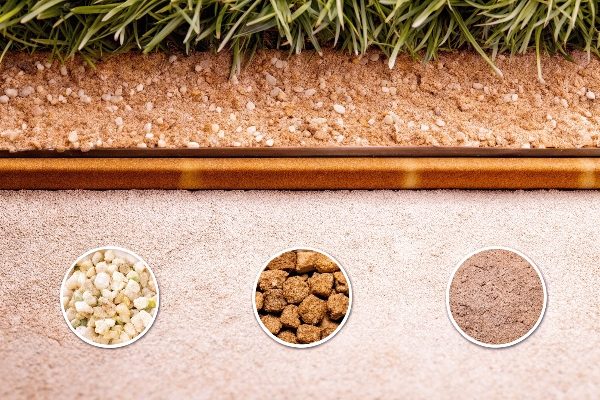Are you tired of watching your lawn turn brown during dry spells? Water restrictions and high bills make maintaining a green yard feel impossible. This is where a modern solution comes in.
Yes, artificial grass has a very bright future, especially in an age of increasing drought. It provides a beautiful, green lawn without needing any water for irrigation. This makes it a practical, cost-effective, and long-term solution for homes and businesses facing water scarcity.

I’ve spent my career in the artificial turf industry, from the factory floor to leading sales teams. I’ve watched this product evolve from a simple alternative to a sophisticated solution for modern problems. The conversation around landscaping is changing, especially as water becomes a more precious resource. People are looking for a reliable way to keep their properties looking great without the constant work and worry that comes with natural grass. Let’s explore why artificial turf is becoming the answer for so many, especially when the weather is dry. The facts show a clear trend toward durable, water-saving landscapes.
Will artificial grass survive drought?
You worry that extreme heat and relentless sun will destroy your investment. The thought of a new lawn fading, cracking, or even melting is a major concern for any property owner.
Absolutely. High-quality artificial grass is specifically engineered to survive drought conditions1. It’s made from UV-stabilized synthetic materials that resist fading and are built to withstand high temperatures without damage, ensuring your lawn stays green and intact through the harshest sun.

When customers ask me about durability, especially in hot climates, I always talk about the science behind the product. Artificial turf isn’t just "plastic grass." It’s a highly engineered surface. The best products, like the ones we focus on at QH Grass, use advanced polyethylene fibers2. These fibers contain UV inhibitors3, which are like a powerful sunscreen for your lawn, preventing the color from fading under intense sunlight. I remember working with a customer, Ahmed, from the UAE. He was extremely skeptical, as he’d seen cheap products fail badly in the desert heat. We sent him samples from our production line and explained the specific grade of UV stabilizers we use. He placed an order, and two years later, he called me not with a complaint, but to order more for another project. He said his turf looked as vibrant as the day it was installed, while everything around it struggled. This is the difference quality makes. It’s not just about looking good on day one; it’s about performing for years.
Material Performance During Drought
| Feature | High-Quality Artificial Turf | Natural Grass |
|---|---|---|
| Water Requirement | Zero for survival | Very High |
| Sun Resistance | Excellent, with UV inhibitors | Prone to scorching and browning |
| Temperature Impact | Remains stable, may get warm to touch | Dries out, becomes dormant, can die |
| Lifespan in Drought | Unaffected, 10-15 years | Weeks or months before permanent death |
| Maintenance | Low, occasional rinse to cool/clean | High, constant watering to keep alive |
How long will grass survive without water?
You see a dry spell in the forecast and begin to worry. How long can your natural lawn hold on before it’s gone for good? It’s a stressful countdown for any property owner.
Most common types of lawn grass can survive for about three to six weeks without water by going dormant. However, in periods of extreme heat and prolonged drought, the grass can die completely in less than a month, leaving you with a costly replacement job.

Natural grass has a built-in survival mechanism: dormancy. When water is scarce, it stops trying to grow and turns brown. It looks dead, but the roots and crown are often still alive, waiting for rain. The problem is, this state is temporary. If the drought continues, especially with high heat, the plant’s resources run out and the roots begin to die. Once that happens, there is no coming back. I’ve talked to countless landscapers, like my friend David in California, who spend their summers in a constant battle. They have to explain to their clients why lawns are dying despite their best efforts. It’s a losing fight against mother nature. This is the main reason David started offering artificial turf as a primary solution. He tells his clients, "With natural grass, you are paying for constant maintenance and a gamble. With artificial turf, you make a one-time investment in a guaranteed result." The peace of mind that comes from not having to worry about the weather forecast is one of the biggest selling points. Your landscape’s beauty is no longer dependent on factors you can’t control.
Natural Grass Survival Timeline (No Water)
- Weeks 1-2: The grass begins to show stress. The blades lose their bright green color and start to wilt as the plant conserves moisture.
- Weeks 3-4: The grass enters its dormant state. It turns brown and appears dead, but the core of the plant is still alive, waiting for water.
- Weeks 4+: This is the critical period. Without any water, the plant’s roots start to shrivel and die. If the drought and heat persist, the damage becomes permanent, and the entire lawn will need to be replaced.
What country banned artificial turf?
You’ve heard talk about artificial turf being banned in some places. This makes you hesitate. You don’t want to choose a solution that could face legal issues or fall out of favor.
No country has a complete, nationwide ban on artificial turf. Some local cities or regions have placed restrictions, often because of concerns about the environmental impact of older, low-quality products. These discussions are actually pushing the industry to innovate and create better, more sustainable turf.

As an engineer, I follow these discussions closely. The concerns usually center on two things: microplastic runoff and what happens to the turf at the end of its life. These are valid points that the industry is actively working to solve. The "bans" you hear about are almost always targeted at outdated products, especially those using crumb rubber infill from old tires. Today, the technology is much more advanced. I was just on a call with a potential partner, José, from a company that prioritizes green building materials. He was asking tough questions about recyclability. I was excited to explain that our newer product lines are designed to be 100% recyclable. They use a single type of polymer for both the blades and the backing, which makes separating and recycling them simple. We also offer organic infill options, like sand or cork, instead of rubber. These local regulations are not a threat to the future of artificial turf. They are a catalyst for improvement, pushing out low-quality manufacturers and rewarding companies that invest in safer, more sustainable technology. Choosing a high-quality supplier like QH Grass means you are getting a product designed for the future, not one stuck in the past.
Conclusion
Artificial turf is a durable, water-saving answer for drought-prone regions. Its consistency and low upkeep make it a smart investment for a reliable, beautiful, and worry-free landscape.
-
Discover how artificial grass is engineered to thrive in drought conditions, making it a sustainable choice for your lawn. ↩
-
Understand the technology behind advanced polyethylene fibers and their role in enhancing the durability of artificial turf. ↩
-
Learn about UV inhibitors and how they protect artificial grass from fading, ensuring long-lasting vibrancy. ↩
_画板-1.png)
_画板-1.png)